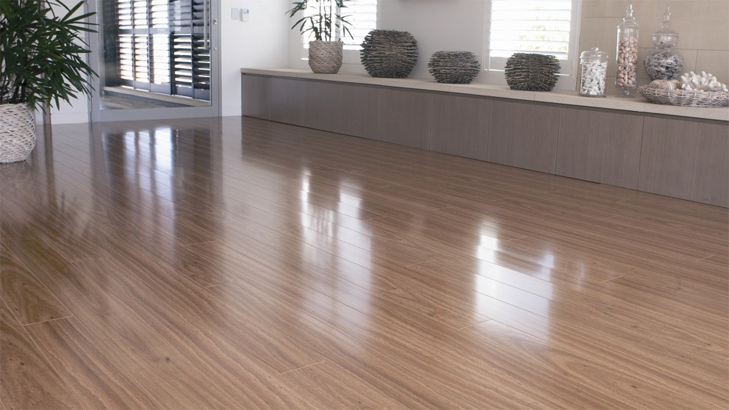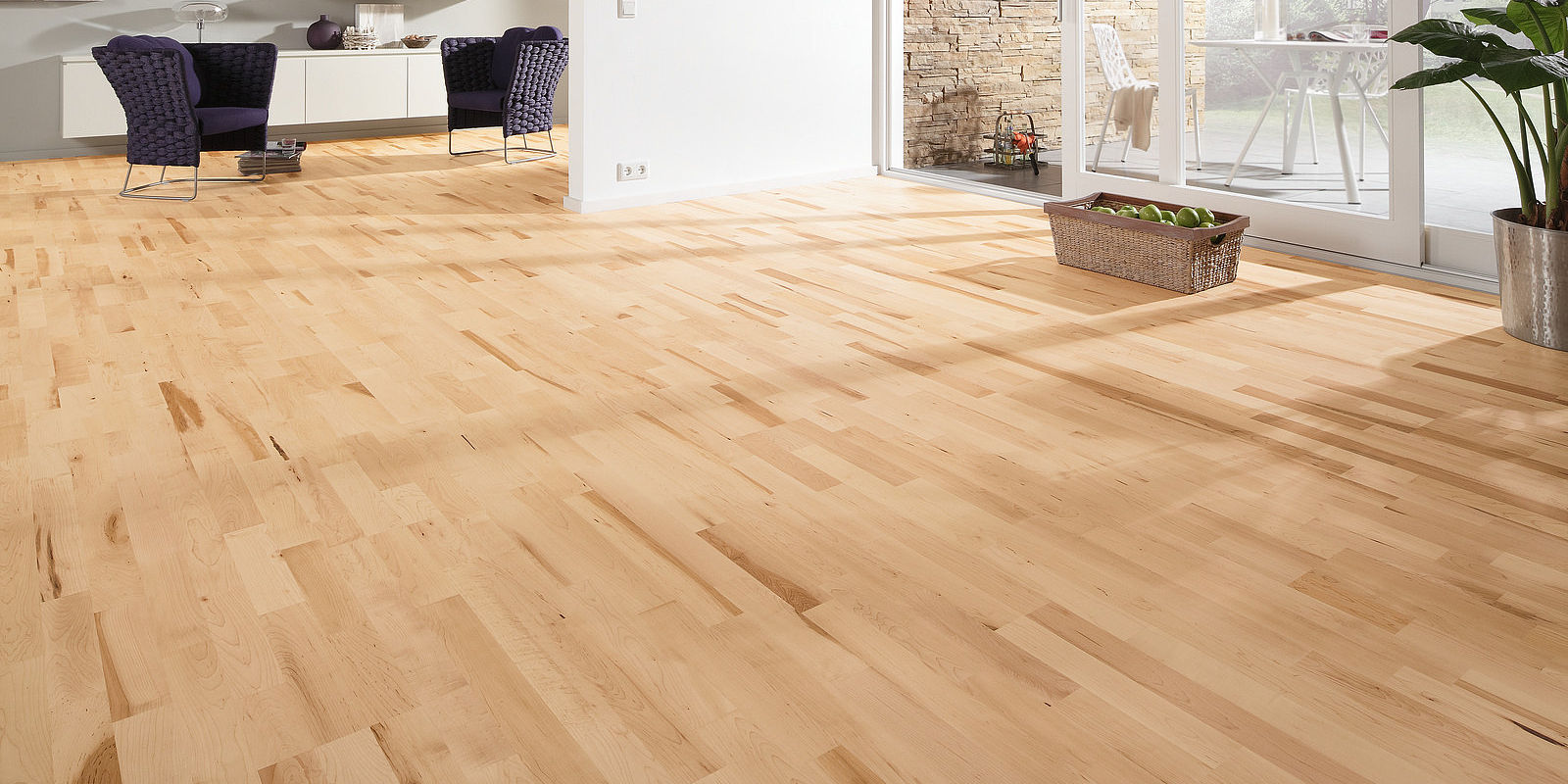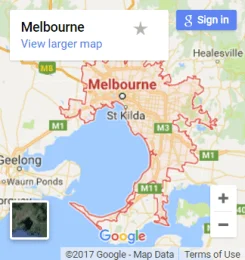You finally decided to refinish those old wooden floors in your home. Great idea – nothing transforms a space quite like freshly sanded and polished wood floors. But refinishing floors is difficult, messy work, especially if you’ve never done it before. The pros make it look easy, gliding their sanders across the floor with the precision of a surgeon.
How do they work on wooden floor sanding and polishing? What’s their secret? Good news – we convinced our expert wooden floor refinisher to spill the details on how they work their magic on professional floor sanding Melbourne services.
In this article, we go behind the scenes to show you the step-by-step process the professionals use to sand and polish wood floors.
Follow along, and by the end, you’ll have gleaming wooden floors to be proud of and the knowledge to maintain them for years to come. Let’s get started!
Prepare the Workspace
The first step is to thoroughly clean the floor. Our professionals will sweep away any dust and debris, then mop the floor with a wood floor cleaner or mineral spirits to remove any remaining grime.
Next, they’ll inspect the floor for any damaged boards or planks that need replacement or repair. Minor dents or scratches can often be sanded out, but more significant damage requires board replacement before sanding and refinishing the floor.
Once the floor is clean and repaired, professionals get to work sanding and polishing floors. They start with coarser grits of sandpaper, around 80 to 100 grits, to aggressively sand out the current finish and imperfections. As they progress, they move to progressively finer grits, like 120 to 220 grits, to smooth the floor in preparation for the new finish.
A final pass with an ultra-fine 400 or 600-grit sandpaper leaves the floor silky smooth. After a final vacuuming, the floor is ready for staining and sealing. Professionals apply 2-3 coats of polyurethane or lacquer sealant, waiting for each coat to dry completely between applications.
With a keen eye for detail and the proper equipment and techniques, our professionals can sand and refinish worn and weathered wood floors, restoring warmth and beauty. The transformation is astounding!
Sanding Equipment and Grit Selection
To make wooden floors smooth and shiny, our professionals use high-quality sanding equipment and progressively finer grits of sandpaper.
-
Sanding machines
Our professionals use heavy-duty floor sanders, like belt sanders, orbital sanders, and drum sanders with dust extraction. For edges and corners, they use detail sanders. Start with a coarser 40-60 grit to quickly level the floor, then progressively move to finer 80, 120 and 220 grits.
-
Methodical process
Our professionals sand methodically, starting with the grain using overlapping passes, then sanding diagonally across the grain, and finally sanding in small circles. They check their work with a bright light to ensure an even, smooth surface without swirl marks before moving to the next grit.
-
Finer grits mean smoother floors
Progressively finer grits, from coarse to ultra-fine, are key to achieving glassy, smooth floors. Professionals may go up to 400 or 600 grit for a polished finish. They buff and wipe away dust between grits and vacuum thoroughly when done.
With the proper equipment and technique, our professionals are able to sand and polish wooden floorboards to a beautiful, durable finish. Their methodical, multi-step process using progressively finer grits is key to achieving a smooth, glossy surface and reviving and protecting wooden floors.
Inspecting and Repairing the Wood
Once the sanding is complete, our professionals closely inspect the wood for any signs of damage or needed repairs.
They search for things like water damage, deep scratches, burns, splits or cracks in the wood. If the floor was previously stained or covered in old varnish, they ensure all of it has been properly stripped away. Any problem areas are marked for fixing before the polishing begins.
Repair methods depend on the type and severity of the damage. Small cracks or scratches can often be filled in with wood filler and then stained to match. For water-damaged or warped boards, they may need to be replaced. Professionals use techniques like wood inserts, splicing and board replacement to seamlessly fix any issues. Their goal is to return the wood to a smooth, blemish-free surface so the new finish adheres properly and provides maximum protection.
Once satisfied the wood is in good shape, they perform a final light sanding to rough up the surface before applying the first coat of finish. This helps the new stain, sealant or lacquer bond strongly to the wood. With the surface prepared and repairs made, the wood floor is ready for its new polished look.
Professional Floor Sanding Process
Once the floor has been cleaned, inspected and repaired, the sanding process can begin. Professionals use commercial sanding machines, starting with coarser grits of sandpaper and progressing to increasingly finer grits.
- The first sanding uses a coarse 60-80 grit sandpaper to strip away the existing finish and imperfections in the wood. This opens up the grain and provides a “tooth” for the next grit.
- The second sanding employs a medium 100-120 grit to smooth the surface. This removes scratches and marks from the previous step, levelling the floor.
- Screening uses a 150-grit screen to further refine the surface. The fine screenings are vacuumed away.
- Finally, a fine 220-240 grit sandpaper or screen is used for the final smoothing and finishing. The floor should feel glassy smooth at this point.
All dust is extracted at each stage to prepare for staining or sealing. Our professionals will check their work, sometimes using a bright light angled along the boards to highlight any imperfections before the finishing process begins.
Sanding and polishing wooden floorboards requires skill and the proper equipment to achieve an ultra-smooth surface. Following the proper grit sequence and using a light touch is key to a professional result.
Filling Gaps and Cracks (If Necessary)
Filling in any gaps or cracks in your floorboards is an important step to achieving a smooth finish. As wood ages and dries out, small splits, cracks, and holes can form, creating imperfections in the surface.
Our professionals will use a wood filler, also known as wood putty, to patch these holes and cracks. The filler comes in a variety of wood tones to closely match your flooring. They apply it with a putty knife or spatula, pressing it firmly into the cracks to bond well.
Once dry, the filler is sanded smooth and flush with the surrounding wood. Several thin applications may be needed for larger cracks, allowing it to dry in between. The pros know how important it is to fill all imperfections before the final sanding and polishing stages. Any cracks left unfilled can show through the finish, ruining the smooth appearance you want.
Take your time with this step—it’s worth doing thoroughly. Patch all holes, splits and cracks for the best results. With the imperfections filled and sanded away, your floor will soon be ready for its final finish to bring back the warmth and beauty of the wood.
Dust Management
Our professionals take dust management very seriously when sanding and polishing wooden floorboards. As floors are sanded down, fine wood dust fills the air, coating every surface in the room.
-
Containment and Ventilation
Our professionals first seal off the work area from the rest of the home using plastic sheeting and tape. They also set up industrial air filters and exhaust fans to ventilate the space, pulling the dust out. These containment measures prevent the dust from spreading throughout the house, saving hours of cleanup.
-
Vacuums and Dust Extractors
Powerful shop vacuums and dust extractors are used frequently throughout the sanding and polishing process to remove dust from the floor as it is being created. The vacuums are fitted with special filters designed to capture the fine wood particles. The dust extractors can then filter and recycle much of the dust collected back into the air, minimising waste.
-
Damp Mopping and Tacking
Once the final coat of finish has been applied, our professionals will damp mop and tack the floor with water and a sticky roller to pick up any remaining dust before the finish dries. This leaves the floor clean and the finish smooth, requiring minimal buffing.
-
Thorough Cleaning
Finally, the work area is meticulously cleaned. Walls, trim, vents, and fixtures are wiped down and vacuumed. The plastic sheeting is removed, and vents are cleared of any remaining dust. The space is left spotless, with no traces of dust left behind from the sanding and polishing process. Clients can move furniture back in right away without worry of dust ruining the new floor finish.
Floor Cleaning and Preparation for Polishing
Once the sanding is complete, our professionals thoroughly clean and prepare the floor for polishing.
The floor is vacuumed and swept to remove all dust and debris from sanding. They then damp-mop the floor using a hardwood floor cleaner or a mixture of vinegar and water. The mop water is changed frequently to avoid leaving streaks on the floor.
- Cleaning ensures there is no dust or grime that can get trapped under the polish and affect the final finish.
- A clean floor also allows for better adhesion of the polishes and sealants.
After mopping, the floor is left to dry completely. It usually takes 3 to 5 hours for the wood to dry fully. The professionals use fans and open windows to improve air circulation and speed up drying when possible.
- A dry floor is essential before any polishes or sealants are applied. Excess moisture can damage the wood and affect the quality and durability of the finish.
Once dry, the floor is ready for the polishing and sealing process to begin. The professionals carefully inspect the floor to ensure an even, smooth surface and that all imperfections have been adequately addressed during sanding. This helps achieve the best possible results from the polishing.
- Close inspection and quality checks are vital before moving on to the next step. Professionals take pride in providing high-quality work and customer satisfaction.
With cleaning and preparation complete, the beautiful new wood floor is ready to be polished and sealed to perfection. Our professionals work carefully through each step of the process to transform your wood floors and leave you with a stunning new surface.
Floor Polishing Process and Finishing
Once the sanding is complete, it’s time for the professionals to polish and finish the floors. This final step will enhance and protect the natural beauty of the wood.
-
Applying the Finish
The polishing crew will apply 2-3 coats of finish, waiting 2-3 hours between coats. Popular finishes include polyurethane, lacquer, and wax. Oil-based polyurethane creates an amber tone and durable finish, while water-based poly dries clear and eco-friendly. Lacquer dries quickly but isn’t as durable. Paste wax must be reapplied regularly but leaves a natural matte sheen.
The pros will use synthetic-bristled brushes, rollers, or pads to apply the finish. For the smoothest results, they’ll sand lightly between coats with fine-grit sandpaper (220 grit or higher). The final coat is then allowed to dry completely, usually 3 to 7 days.
-
Protecting the Finish
Once cured, the new floor finish is ready to protect. Place protective pads under furniture to avoid dents and scratches. Vacuum, dust and damp mop regularly, but avoid excessive moisture, which can damage the finish. For high-traffic floors, floor protectors or area rugs may be recommended, especially under dining tables, chairs and pet areas.
With proper care and maintenance, a professionally finished hardwood floor can last for many years. But when the floor starts showing signs of wear, it’s best to call our experts back to re-sand, re-stain or re-finish the floor and restore it to like-new condition.
Our experienced flooring contractor knows the appropriate techniques to revive hardwood floors and keep them looking beautiful.
Final Inspection and Touch-Ups
Once the wooden floor sanding and polishing are complete, our professionals will do a final inspection of the floors. They check for any remaining imperfections or uneven areas that need touch-ups.
- Examine the floors closely under good lighting conditions to identify any spots that were missed. Things like tiny scratches, dents or stains can be hard to see until the polishing stage.
- Lightly sand any imperfections with fine-grit sandpaper and re-polish those areas. For small dents, scratches or stains, a wood filler or touch-up pen may be used prior to re-polishing.
- Double-check that the edging and trim work around the room looks uniform and matches the rest of the floor. The edging is often done by hand, so it can be tricky to get perfectly even with the main floor. Additional sanding or polishing may be needed.
- Ensure transitions between rooms and floor types (like wood to tile) are smooth and seamless. There should be no difference in floor height or finish.
- Examine the corners and edges along the walls to make sure the polisher was able to reach fully. Some minor additional sanding or polishing by hand may be required in tight spots.
- Once satisfied the floors look flawless and glossy, the final buffing pad is attached to the polisher for a quick pass over the entire floor. This helps further harden the finish and brings out a bright shine.
- Finally, clean up the work area and vacuum/sweep the entire floor thoroughly to remove any dust in preparation for the floors to be walked on.
Our professionals take pride in providing high-quality work and a polished floor you’ll enjoy for years to come. A final inspection and any necessary touch-ups are an important part of achieving a durable, glossy and flawless finish.
Post-Process cleaning
Once the sanding and polishing process is complete, our professionals will do a thorough cleaning of the work area.
After all floor sanding and polishing Melbourne service steps are done, our professionals will do a deep cleaning of the entire work area to remove any remaining dust or debris.
They will first use an industrial vacuum to pick up any heavy particles from the flooring and surrounding baseboards and trim. Next, they will mop the floor with a wood floor-friendly cleaner to lift any remaining fine dust and grime. It’s important to use a product specifically for hardwood floors to avoid any damage.
The pros will also wipe down any adjacent surfaces like walls, cabinets, and countertops to remove dust. All equipment like sanders, edgers, and buffers will be wiped clean before being packed up.
The final step is to re-assemble any furniture or fixtures that were moved prior to starting the job. The flooring crew will place felt pads, coasters or other protective layers under heavy pieces to avoid scratching the freshly refinished floor.
Once the post-process cleaning is done, your newly sanded and polished hardwood floors will be ready to shine. Keeping them clean going forward with regular sweeping, vacuuming and damp mopping using proper hardwood floor products will help keep them looking beautiful for years to come.
Wrapping Up
After reading through the detailed steps, you now have a solid understanding of the floor sanding and polishing Melbourne service process for wooden floors. While it may seem straightforward, it requires patience, the proper equipment, and a meticulous approach to achieve professional results.
Now that you have a clear picture of the Detailed process involved in floor sanding and polishing, why take on this heavy task yourself? Entrust it to the experts at Total Floor Sanding and Polishing.
While our skilled professionals work their magic, you can relish your free time, knowing your floors are in capable hands.
Say goodbye to stress and hello to a beautifully transformed space. Let’s turn your vision into a reality!




